Essential Oils 101: The Ultimate Essential Oil Guide
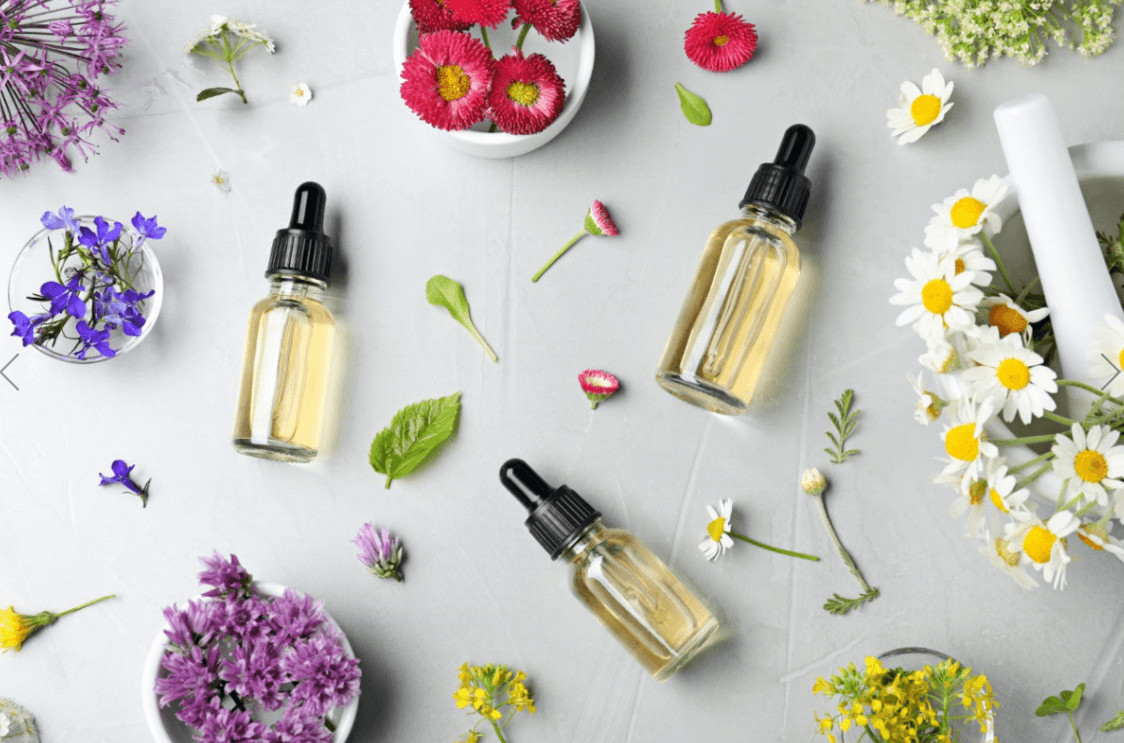
Table Of Contents
- Acne
- Allergies
- Anxiety
- Arthritis
- Bruises
- Bug Bites
- Cold Sores
- Colds
- Congestion
- Constipation
- Cough
- Depression
- Dogs
- Ear Ache
- Ear Infection
- Eczema
- Energy
- Fleas
- Focus
- Headaches
- Hemorrhoids
- Inflammation
- Menstrual Cramps
- Migraines
- Mosquitos
- Muscle Soreness
- Nausea
- Pain
- Poison Ivy
- Psoriasis
- Relaxation
- Sinuses
- Sleep
- Sore Throat
- Stress
- Sunburn
- UTI
- Vertigo
- Warts
- Weight Loss
- Yeast Infection
- Amber
- Bergamot
- Black Pepper
- Blue Tansy
- Camphor
- Cedarwood
- Chamomile
- Cinnamon
- Citronella
- Clary Sage
- Clove
- Copaiba
- Cypress
- Eucalyptus
- Fennel
- Frankincense
- Gardenia
- Geranium
- Ginger
- Grapefruit
- Helichrysum
- Jasmine
- Juniper
- Lavender
- Lemon
- Lemongrass
- Lilac
- Manuka
- Myrrh
- Orange
- Oregano
- Palo Santo
- Patchouli
- Peppermint
- Pine
- Rose
- Rosemary
- Sandalwood
- Spearmint
- Tea Tree
- Turmeric
- Vanilla
- Vetiver
- Ylang Ylang
- Essential Oils Benefits
The universe of essential oils is vast and sometimes difficult to navigate. There are 100 or so essential oils, each with its own attributes and ideal uses (though there is significant overlap). Plainly speaking, essential oils are plant extracts in liquid form, and so I will be using those terms interchangeably despite some technical differences. Whether it is derived from the leaves, flowers, stems, seeds, fruit, or root – it is a highly potent, volatile, and altogether powerful substance.
Throughout history and up to our current times, essential oils have been used extensively for medicinal, cosmetic, spiritual, and therapeutic purposes at large. This guide will explore the world of essential oils, and discuss ways in which they can be beneficial in everyday life.
Essential Oils Benefits Breakdown
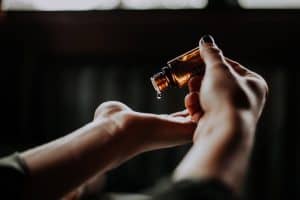
Essential oil in use.
As comprehensive as this guide aims to be, it doesn’t claim to pack the entirety of essential oil lore into its pages. These oils’ health benefits involve a wide spectrum of mind and body. You don’t have to be ill or under the weather to take advantage of these natural extracts. Many oils have the capacity to not only help heal the sick and wounded but also keep those who are healthy in the line of good health and vitality.
Most of the health claims associated with essential oils have not been fully verified by the scientific community. Research is still ongoing. As far as the FDA is concerned, only essential oils that are classified as a drug are regulated as such. Others are categorized as a cosmetics product or a nutritional supplement. Those who practice alternative methods of medicine (Ayurveda, Traditional Chinese Medicine, etc.) are all about these oils. But modern medicine is in no hurry to classify folklore and herbs as viable therapeutic alternatives.
Even though some benefits are true pretty much across the board, you can always find anomalies and exceptions. There are people who don’t respond well, others who are allergic, or people who have a different reaction to a specific oil (one which is not necessarily part of its known effects). You don’t always know how a certain extract will affect an individual. The effects are not as readily measurable as with certain types of mainstream medication.
Essential Oils For Acne

Woman with clear skin.

Woman with clear skin.
Acne mostly originates at the hands of two things: the accumulation of dead skin, or the accumulation of sebum (the body’s natural oil). The dead skin or sebum clog the skin’s pores and these, in turn, become a hotbed for bacteria. Pimples are caused by these bacteria. What we’re then left with are the familiar whitehead, blackhead, and redhead spots.
Some essential oils can kill bacteria and prevent their return. These are often the ones recommended for use against acne. What makes the biggest difference is the source of the acne and the specific type of acne in question. The oils’ anti-inflammatory properties can help calm the skin and ease the condition. Take care, because in some cases the inflamed skin can be harmed with these powerful plant extracts instead of healed.
Jump to: Tea Tree – Frankincense – Rosemary
Essential Oils For Allergies
Allergy symptoms range from near-unnoticeable to severe and life-threatening. Many times, it is not enough to use essential oils for treatment. You often use essential oils in tandem with mainstream allergy medication or management, in order to deal with the symptoms and provide a respite.
Some oils are best applied topically (after dilution), some are better off when they’re inhaled, and others are more effective when added to a nice bath. Some allergies start seriously early, and you can prevent severity by starting to take care of yourself earlier.
Essential Oils For Anxiety

Calm man breathing deeply.

Calm man breathing deeply.
Often categorized as a feeling of nervousness, unease, and worry, anxiety is an umbrella term for different states of being. These include general anxiety, social anxiety, anticipatory anxiety, obsessive-compulsive disorder, and others. Anxiety may be a feeling, but it can project outwards and effectively disrupt a person’s normal functioning and conduct.
Essential oils can lift a person’s spirits, heighten their mood, and increase the circulation of the blood. The extra oxygen will also play a part in the mind and body’s relaxation. More often than not, there is an underlying issue at the base of the anxiety. Seek out the root cause of a person’s anxious feelings. This will likely give you a better idea of what oil to use.
Jump to: Geranium – Ylang Ylang – Bergamot
Essential Oils For Arthritis

Woman in pain.

Woman in pain.
Joint diseases and disorders can be particularly difficult. This is true whether the onset is slow or fast and whether the condition is chronic or one-off. The pains and stiffness can cause significant discomfort and sometimes a limited range of motion. A large percentage of Western society will experience one form or another of arthritis during its life. Joint-related diseases become more of a concern as the body ages. However, there are types of arthritis which also affect young people.
Essential oils may be of some service here, specifically in the case of pain management. Using mainstream medication (prescribed or over-the-counter) for the pain can be underwhelming or downright ineffective at times, depending on the case. The scent and potency of the essential oils may be able to soothe and calm the triggered areas of the body. Oils can also help bring down swelling and stiffness, and reduce inflammation symptoms.
Jump to: Frankincense – Myrrh
Essential Oils For Bruises

Woman with clear skin.

Woman with clear skin.
A bruise appears when there is internal bleeding close to the skin (and usually due to some physical trauma). Bruises are most often seen in shades of red, purple, blue, and more. Some individuals are a lot more prone to bruising than others, and it really depends on the circumstances. Often, bruises are accompanied by pain, sensitivity, and sometimes limited motion. Most of the time they are not fatal, but some hematomas are indications of more serious issues.
Contributing factors to the severity and looks of a bruise include age, skin tone, pre-existing conditions, genes, and the circumstances of the injury. When using essential oils, mix with a carrier oil or a designated cream/lotion. Do not apply topically and undiluted, since that could end up aggravating the condition. Essential oils can help the body with the healing process but you should use them with care.
Essential Oils For Bug Bites
Some people’s go-to method for dealing with normal bug bites is an over-the-counter solution. Others are interested in employing a more natural (or holistic) method of dealing with bites from mosquitos, fleas, lice, bedbugs, flies, and mites of different kinds. Many commercial products contain plant extracts of one kind or another since their usefulness in this matter is widely acknowledged.
Essential oils can provide relief from the itching, pain, and discomfort. They penetrate the skin barrier and help from the inside out. You can apply these oils topically after you dilute them with a carrier oil. In the case of bites, some choose to apply these oils without the use of a carrier, but again – due to their strength and potency it is not advised.
Essential Oils For Cold Sores

Woman applying an essential oil to lips.

Woman applying an essential oil to lips.
This widespread (and highly contagious) condition is brought on by a viral infection. It commonly takes the form of blisters in the area of the mouth, though sometimes it can be found elsewhere on the body. While there is no cure for cold sores, there are different pharmaceutical products available to manage symptoms. These may also help to prevent the sores from reappearing, depending on the type of infection and the individual’s lifestyle.
When it comes to using more traditional methods, essential oils are able to dry out the fluid-filled blisters, ease the discomfort, and soothe the sensitive skin. The virus itself leaves after some time without any intervention, but using essential oils can help to speed the process along thanks to their antiviral and anti-inflammatory properties.
Essential Oils For Colds

Cold essentials.

Cold essentials.
The common cold (aka upper respiratory infection) is an annoyingly shifty condition that famously has no cure. The only thing that you can do is care for the symptoms. Runny nose, sore throat, mild fever, pain, and discomfort. Once you rule out something like strep throat or similar conditions, it’s just a question of managing symptoms. Thankfully, this is something essential oils are really good at.
Here are a few which have not been brought up yet, but they may be useful in this case. These include cinnamon essential oil, oregano, and thyme. They can help provide relief, especially in the throat area. If you have a cold and a cough, oregano and thyme are veritable lifesavers. You can rub peppermint, eucalyptus, or lavender on your chest to encourage clear airways. You can also try steaming these essential oils on your face to provide relief. An alternative option is to inhale them directly or indirectly through a diffuser.
Essential Oils For Congestion
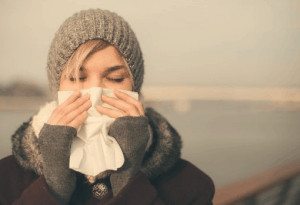
Woman with cold.

Woman with cold.
During certain illnesses or allergic reactions, the sinuses and airways can become congested, painful, and incredibly sensitive. Congestion is often located in the nasal and chest areas. It can last for days if you don’t treat the primary issue which is causing congestion.
Once properly diluted, essential oils can be applied topically, and provide a literal breath of fresh air. Often congestion is not a standalone symptom and it is usually accompanied by other unpleasantness, but you can find some relief through the use of these oils.
Jump to: Eucalyptus – Rosemary
Essential Oils For Constipation
Constipation refers to infrequency or difficulty with bowel movements, and this can be mild or severe in its intensity. It could be a primary condition or secondary, and there are many factors involved: everything from diet choices to medication and pre-existing conditions. While constipation is not usually life-threatening, there are instances where it can contribute to an eventually fatal outcome. See a doctor if the situation doesn’t resolve itself in a few days, or if symptoms intensify.
Often there will be abdominal discomfort, bloating, and pain that comes with constipation. Essential oils can be mixed with carrier oils, and then applied topically to the stomach. Rub the mixture gently into the affected area, until it is absorbed by the skin. These oils can also be diffused and inhaled, or mixed with a cream/lotion. They can help provide relief from the symptoms, but for the stool to soften and exit properly other help may be required.
Essential Oils For Cough
There are different types of coughs, such as dry, wet, whooping, and croup. Depending on the issue and the source of the cough, there are different ways of going about treating it. Some coughs are the result of a viral infection, others could be due to an allergy or a less severe form of irritation. Most coughs are not serious or life-threatening in and of themselves, but still, it’s a good idea to help the body out.
Using a humidifier or oil diffuser is one of the most common ways to treat a cough or find relief from the pain, scratching, and discomfort. There are different oils you can use, depending on the condition. The fact that they are highly potent means a little can go a long way.
Essential Oils For Depression

Woman on bed.

Woman on bed.
Symptoms of depression vary in a big way, depending on the condition’s specific type. It could be a seasonal thing, but it could also be chronic. It could be clinical depression or bipolar disorder. The mental component plays a large role here, and symptoms – which are often mental and physical – may take a heavy toll on a person’s quality of life.
So where do essential oils fit in here? Well, they aren’t going to cure depression. But they may ease the sadness, despair, and anxiety. There is also the mood and sleep factor which is substantial, and essential oils can help to elevate your mood and provide you with a higher quality of sleep. Sometimes, a small change can do a lot.
Jump to: Ylang Ylang – Geranium – Grapefruit
Essential Oils For Dogs

Dog on leash.

Dog on leash.
Even though canines and humans have a real bond and share some traits, it doesn’t mean they can be treated or helped in the same way. Sometimes, a human and dog may even be experiencing the same affliction, but it certainly can’t be treated in the same way.
Essential oils can be used as a complementary treatment, or as a way of keeping dogs in good health. Whatever you do, make sure to run it by your doggy doctor first. As with humans, essential oils can have adverse and possibly-detrimental results when mishandled, due to their potency.
Essential Oil For Earache
There could be many reasons for an earache, although many times earaches are directly related to infections. Those who are not interested in inserting oil into their ears will have a better shot at using essential oils to help manage the pain itself. If the ache lasts for more than several days or intensifies, get to a doctor. Also, it’s important to treat both ears in the same way. This is true even if the symptoms are only appearing to one of them.
The external ear and the sides of the neck are prime locations for an essential oil massage. Dilute it with the right kind of carrier, and be sure to hit those two spots. Be gentle, since they tend to be more sensitive if there is the possibility of an infection. After the earache itself passes, consider continuing use of essential oils so the problem won’t quickly resurface.
Essential Oils For Ear Infection
Ear infections are uncomfortable situations. Although they are more common with kids (who are inherently more sensitive), adults may also suffer from them. You can often manage symptoms but get to a doctor if several days have gone by or if it intensifies. Sometimes these infections will only last a few days, but that still doesn’t make it any less painful or inconvenient to undergo.
Whether viral or bacterial in nature, there are essential oils that can help the body fight back. Make sure, as always, to dilute your oils properly before use. These can be inserted into the ear directly using a dropper (usually not recommended), or it can be dripped onto a small piece of cotton and gently placed in your ear. You can also avoid invasive treatment and opt to stay exclusively on the external area of the ear.
Essential Oils For Eczema
The inflammatory condition known as eczema attacks the skin, often causing redness, irritation, and pain. For some people, it is a chronic condition that lasts years, but it is not contagious. Eczema can be brought on by a variety of triggers and circumstances and is not curable. It appears in various degrees and intensities in babies, children, and adults.
As powerful as essential oils are, they are not a cure-all. They mainly serve to soothe the affected skin, and to prevent it from flaring up again or from the symptoms worsening. After you dilute the oils, you can use them in a bath, vaporize them in a diffuser, or apply it topically around affected areas.
Jump to: Peppermint – Tea Tree
Essential Oils For Energy

Woman dancing on bed.

Woman dancing on bed.
As you may know, energy is never created or destroyed. It is converted over and over and is put to various uses. As far as human beings are concerned, we get our energy primarily from the sun and from our food. In this context, energy is simply mood, force, and vitality. A lack of energy (lethargy, fatigue, reduced motivation, and strength) can be brought on by many things. It’s important to note that diet and lifestyle are at the top of that list.
Essential oils are said to help to elevate one’s mood, boost immunity, and reduce fatigue or low levels of creative force. Whether through inhaling or topical application, the senses can be enlivened through using these potent plant extracts. The hormones which govern our mood and levels of alertness can be manipulated through the use of essential oils. Consult with your physician and keep your hormones balanced.
Jump to: Orange – Spearmint – Cinnamon
Essential Oils For Fleas
Flea infestation can be a serious thing, especially if not handled properly. Fleas are parasitic insects, and they can transmit plenty of diseases to the host. Dogs may bite and scratch and hurt themselves to deal with their flea problems, and some are severely allergic to fleas. Whether it’s dogs, cats, or humans, fleas can be a mild irritation at best and a full-blown fatal condition at worst.
While essential oils can provide symptom relief and even prevent and repel flea infestations, they are not a definite treatment. Sometimes, chemical treatments will have to take place, due to the circumstances. Essential oils affect animals differently than humans, so take great care when diffusing, spraying, or applying diluted oils.
Essential Oils For Focus
The ability to focus is not exclusively a human trait, but in humans, it is essentially the capacity for paying attention to something specific in the environment. To focus means to concentrate; to divert our attention and consciousness towards a particular element or phenomenon. Some clear examples when focus and concentration are needed are: operating a vehicle, sitting for a challenging academic exam, or conducting an intricate surgical procedure. Focus counts for a lot, and insufficient concentration can sometimes lead to undesirable consequences.
If you find yourself in need of extra-sharpened focus and increased attention, essential oils can help you out. The scents which certain oils give off can do the body and mind a whole lot of good. They help to channel their resources in a more productive manner. Whether burned in a diffuser or simply dripped onto a piece of cotton, inhaling these oils’ fumes can elevate mood, increase concentration, and provide the individual with some additional focus.
Jump to: Spearmint – Lemon – Black Pepper
Essential Oils For Headaches
Headaches are generally classified as primary and secondary. Primary headaches have no underlying medical issue and are sort of a standalone (and often benign) condition. Secondary headaches, however, are symptomatic and could be brought on by a multitude of reasons, some more serious than others.
When choosing an essential oil for head pains, it helps to know the type, source, and/or cause of the headache. Several oils have shown great promise in cases such as migraines, stress pains, and sinus-related issues. You can mitigate skull pains and headaches, secondary or primary, with the help of the right essential oils.
Jump to: Lavender – Peppermint – Chamomile
Essential Oils For Hemorrhoids
Another one of the more common – and quite uncomfortable – conditions is hemorrhoids. These are swollen veins in the area inside and outside of your anus. This condition often leads to pain and inconvenience. There is swelling in the affected regions (of course), and bleeding while defecating or afterward. Not all cases are the same, and some can be very mild. However, even those are irritating and bothersome to contend with.
Hemorrhoids affect a large portion of the population at one point or another, and there are many ways (medicinal or other) to find relief. Using essential oils for hemorrhoids is done mainly through inhalation rather than application because contact between the oils and the hemorrhoids themselves could be potentially catastrophic. Nevertheless, some choose to apply diluted oils directly onto external veins, and this method may succeed in reducing their size.
Essential Oils For Inflammation
Inflammation is an umbrella term for the physical reaction to infection or injury (as a condition or complication). The area of the body which is inflamed will often become red, painful, sometimes swollen and hot, and generally non-functional. Inflammation sounds bad (and it can be) but it’s the body’s way of defending and protecting itself. Inflammation can be chronic or acute, and in the case of chronic inflammation, it could be indicating much more serious problems.
Essential oils can aid the body’s attempts to right the wrongs and otherwise handle the situation. Pain and discomfort are often part of dealing with inflamed tissue or organs, and different types of oils can be used for the reduction of the symptoms associated with inflammation. Many times, essential oils are used in conjunction with prescribed medication or treatment. Always dilute your oil, monitor your situation closely, and reach out to your doctor if necessary.
Essential Oils For Menstrual Cramps

Tampons.

Tampons.
Everything that goes on during menstruation causes your body to act and react differently. Some women feel mild discomfort while others feel a pain which is so intense they are veritably immobilized by it. The contractions and tensions help the period flow out of the body. At times this comes at a steep price. Some women get the wind knocked out of them and are down for the count, for at least a couple of days, month after month.
Making use of essential oils for menstruation cramps is a popular home remedy, and it has been used for thousands of years. Many turn to these oils for relief from the pain and bloating. The best method of treatment is a topical application, with diluted oils being slowly massaged into the skin. You can also mix the oil(s) with a massage cream or salve of some kind. Essential oils are a natural and easy way to lessen period cramps and help the body cope with the changes.
Essential Oils Migraines
I mentioned migraines earlier in reference to headaches. Migraines are triggered by a variety of emotions and physical states. It’s usually personal and highly subjective – anything from mental stress to lack of quality sleep. With some people, the pain can be seriously chronic and sometimes unpredictable.
Some essential oils target the physical location of the pain, and you can use some to lower stress and deal with the more mental aspect of the condition. These oils are great for easing pain in general. You can inhale them or apply them topically (once diluted). Science still hasn’t figured migraines out 100%, and essential oils are a fine alternative or supplement to mainstream meds. That being said, make sure to talk to your doctor if you plan on using substitutes of combinations.
Essential Oil Mosquito Repellent

Mosquito net.

Mosquito net.
The best defense against mosquitos is a good offense. When it comes to keeping mosquitos at bay, essential oils can prove to be quite literally essential. This is especially true if you are not interested in using certain chemicals on or around your skin. An oil diffuser is a great way to get some peace and quiet from those insects and others.
The oils which repel mosquitos give off a scent which may be intense for some – use them with caution. If you plan on using these oils topically, make sure to do so along with carrier oils. Individuals with sensitive skin should be extra vigilant. As helpful as essential oils might be, it’s still possible that they can be harmful if you use them inappropriately.
Jump to: Citronella – Peppermint – Lemongrass
Essential Oils For Muscle Pain
Muscle pains will often be localized, and it’s something most people have experienced in one form or another. These pains could be the result of an existing and/or ongoing condition, but could also be brought on by tension, over-use, or mild injury. Management of symptoms can be via rest, pain meds, ice packs, massage, and other types of treatment.
Some choose to manage muscle pain with the help of essential oils, with or without OTC medicine. The oil can help cool down and soothe the affected area, bring down any swelling, and reduce the pain involved. When our muscles are all inflamed, or sprained, or post-spasm, it can take some time for them to get back on track and for the body to return to normal. Essential oils can be used as a massage aid, in the tub, or as an addition to an ice/heat pack, and help speed the natural process along.
Essential Oils For Nausea
Nausea is another condition that is not life-threatening on its own. However, it can really mess with you and shake you up. The symptom can be caused by a plethora of issues, both mental and physical. The familiar feeling of discomfort associated with the desire (or need) to vomit can be very mild or sometimes seriously intense.
Depending on the condition which brought it on, you can call on essential oils to the rescue for managing the condition. You can use these oils as an antimicrobial agent, a muscle relaxer, a pain reliever, and a way to improve the quality of your breathing (which might be sub-par due to nausea). Easing the physical discomfort while the body is figuring things out is a major help.
Jump to: Ginger – Peppermint – Fennel Seed
Essential Oils For Pain
One of the most troubling things about illness, injury, or ailment is the physical sensation of pain which often accompanies these conditions. Pain is a highly personal and subjective variable, but it can be managed to some degree. It’s a mechanism that is undoubtedly necessary, but it can also be distressing and incapacitating at times.
Managing pain with essential oils is possible, but it depends mostly on the root cause of the pain. Is it a disease? Muscle pain? Inflammation? Injury or trauma? Treatment will vary depending on the source of pain and the individual. Sometimes ordinary meds aren’t doing the trick, and traditional medicine ends up coming to the rescue.
Jump to: Eucalyptus – Sage – Juniper
Essential Oils For Poison Ivy
Toxicodendron radicans (better known as poison ivy) can be found in North America and parts of Asia. It’s known to cause an irritating and itchy rash (a type of dermatitis) and blisters containing body fluid. It’s classified as an allergic reaction, and it affects a large portion of the population. In cases of hypersensitivity to the allergen, it can trigger a more severe irritation and even go so far as being fatal.
Usually, poison ivy can be treated at home, but if symptoms and pains intensify you should see a doctor. Essential oils can be used to soothe the skin, ease the pain, and generally provide relief from the discomfort. Dilute the oils and apply to the skin, or draw a bath with oils in the water. You can also add the appropriate oils to an OTC cream or lotion, etc.
Essential Oils For Psoriasis
Not everyone has to deal with patches of red and scaly skin, but some experience it regularly. Psoriasis expresses itself as inflammation in various locations of the body. Genetics play a role, but there is no definitive cause. It could develop as a secondary condition, however, when more serious diseases are involved. A health care professional will be able to provide guidance, whatever the case may be.
As a complementary treatment, essential oils can ease the symptoms and help the inflamed areas of the body from the inside. Oils that are combative, cool, and soothing may be a fine addition to whatever you’re using but consult with your physician before combining them. Whether your psoriasis is mild or severe, essential oils can provide some quick-acting and long-lasting relief.
Jump to: Tea Tree – Geranium – Rose
Essential Oils For Relaxation

Woman in lotus pose.

Woman in lotus pose.
The value of proper relaxation cannot be overstated. I don’t mean laziness or procrastination, I mean genuine relaxation. Many of us have to contend with different forms of stress, anxiety, and angst. It seems to be part of the human condition. This is why taking a time-out to relax can be a seriously healthy choice. One way to relax and help the mind and body be more at peace is with essential oils.
Whether you decide to burn them in a diffuser or use them for a massage, the power of these plant extracts is present in the mind and the body. Boost your mood, increase the strength of your immune system, ward off invaders, and calm yourself with different oils or blends. Essential oils are useful as a tool for more positive living, providing that you do so in measure.
Jump to: Grapefruit – Clove
Essential Oils For Sinus Infection
Some people suffer from one-off or chronic sinus infections (aka sinusitis). Sometimes, the symptoms of such an infection are similar to that of an allergic reaction – congestion, pain, discomfort, sensitivity. Despite the similarities, these conditions are brought on by separate catalysts, and you don’t treat them in the same way.
As far as essential oils are concerned, the similarities count for a lot. When it comes to draining the sinuses in a more expedient manner, oils like peppermint and eucalyptus can be a big help. You can also use tea tree and lavender to ease the symptoms. Whether the infection is viral or bacterial in nature, the oils will complement any medical treatment that you follow.
Essential Oils For Sleep

Woman sleeping in a flower field.

Woman sleeping in a flower field.
Sleep is one of the most self-evident human “superpowers”. It’s something we engage in pretty much daily, and it’s one of the greatest sources of healing and coping we have. A person who sleeps well – someone who gets quality sleep – is a person whose body and mind will be able to be more aligned and in better shape. Sleep is when the mind and body go into Maintenance Mode, and there is a lot that goes on during that downtime.
Whether you have trouble sleeping or are merely interested in upgrading your sleep experience, essential oils are here to grant your wish. Essential oils have been linked to improved quality of sleep, and improvement in cases of interrupted sleep. Better sleep = better living.
Essential Oils For Sore Throat
Sore throats themselves are not life-threatening, but they can certainly disrupt your life. This condition is often brought on by an infection, so soreness is exceedingly common during bouts of flu, strep, or the common cold. Symptoms range from very minor irritation to vocally-incapacitating pain and swelling. It’s never fun, to say the least.
Using essential oils for your sore throat can soothe the pain, ease the inflammation, and basically give the immune systems a boost. Depending on the severity of the soreness, you can combine topical application and inhalation, or immerse yourself in a bath with essential oils. The antibacterial, antifungal, and antiviral qualities that some essential oils possess can be highly instrumental in the healing process.
Jump to: Ginger – Peppermint
Essential Oils For Stress

Stressed woman.

Stressed woman.
I already mentioned stress in regards to the onset of migraine headaches, but that isn’t the only stress-related issue there is; far from it. Chronic stress and constant worry can greatly affect your physical and mental health. Easing your mind and finding relief from stress can be achieved in many ways. From illegal drugs or prescribed medication to mindfulness and meditation techniques, these can produce different results.
When it comes to relieving stress and letting go of worries, essential oils are definitely a force to be reckoned with. Certain oils have been used for thousands of years for precisely that purpose – finding peace and soothing the nerves. There are different extracts that can help calm the mind, increase positive emotion, and promote relaxation and well-being.
Jump to: Lavender – Ylang Ylang – Bergamot
Essential Oils For Sunburn

Woman smiling in the sun.

Woman smiling in the sun.
The sun emits many types of rays. Certain kinds are detrimental to the sensitive areas of the human skin, especially in the case of overexposure. Ultraviolet rays are usually the instigator in regard to the appearance of sunburns. The skin becomes visibly inflamed: red, sensitive, painful, and hot. This is actually one of the conditions where the use of plant extracts is a lot more common, as far as treatment goes.
There are many essential oils that possess anti-inflammatory properties and which boost the immune system. As such, these substances can help calm your angry skin and speed up the healing process. Because it’s a condition where using plant extracts is fairly common, there have been some promising studies involving sunburns and essential oils.
Jump to: Helichrysum – Lavender
Essential Oils For UTI
Urinary tract infections are exceedingly common but can be very harmful if you neglect them. They’re often caused by bacteria. In many cases, you can manage it with a course of antibiotics. These infections can be located anywhere in the urinary tract, but most of them affect the bladder and/or urethra. Being close and generally more exposed to the outside world, those two areas are more susceptible to an invasion.
There are different essential oils, with antibacterial and antiseptic properties, which can aid in getting rid of the bacteria and in preventing its return. You can diffuse, inhale or apply them topically after dilution. Whether as a standalone approach or an accompanying treatment to antibiotics, these oils have great promise. As a general rule, it’s recommended to consult with your physician before incorporating essential oils into the treatment.
Essential Oils For Vertigo

Woman breathing deeply.

Woman breathing deeply.
Symptoms include having a sensation of spinning or swaying, feeling off-balance, nausea, and vomiting – these are all signs of vertigo, which is a common form of dizziness. The source is often related to issues with the inner ear, and in many cases, the brain will stabilize itself in time. In more serious and ongoing cases, medication and even surgery may be necessary.
The incorporation of essential oils in the case of vertigo and/or dizziness is not a new concept. I mentioned the oils’ usefulness in managing migraines and headaches, and this is around that same ballpark. Taking care of the symptoms is paramount because it is a seriously disorienting and sometimes quite overwhelming experience. Apply diluted essential oils to the forehead, temples, and/or neck, and massage gently into the skin.
Essential Oils For Warts
Many different kinds of warts have been cataloged over the years. Essentially, they’re all various types of rough, tough, and usually small growths, caused by a virus. Warts often go away on their own, but the process can be a lengthy and sometimes uncomfortable one. Also, in the case of genital warts, it is highly infectious and could be the result of a pre-existing condition or infection.
Those who are interested in treating their warts at home can make use of a number of traditional remedies, one of which is essential oils. Dilute the oil and apply topically, or put a few drops of oil on a cotton ball. Apply it to the wart and secure it with a bandage. You can apply essential oil to the affected areas several times a day, depending on the oil’s potency. You can use certain oils for genital warts as well, but consult with a physician either way
Jump to: Tea Tree – Cinnamon – Oregano
Essential Oils For Weight Loss

Woman exercising for weight loss.

Woman exercising for weight loss.
Eating well and exercising is what will help you to lose weight, period. There are no secrets or shortcuts that offer a natural, holistic, long-term solution. So many people struggle with weight loss, and some are affected by genetics, diseases, lifestyle choices, and more. Some say losing weight may be potentially easy, but keeping it from coming back is a real nightmare.
Plant extracts can help you in your quest to shed pounds, and they have your back when it comes to staying healthy. By inhaling, diffusing, or otherwise applying essential oils, you can help the body reach its optimal state: better immune system, higher energy, more focus, increased satiety, reduction of certain appetites (aka mid-day sugar craving), and more. And these all contribute to weight reduction and living a healthy life.
Jump to: Grapefruit – Bergamot –Cinnamon
Essential Oils For Yeast Infection
Vaginal yeast infections are sometimes confused with UTIs, but they’re very separate conditions despite some similarities. The infection expresses itself as redness, itchiness, and irritation, pain, a burning sensation while urinating, or a thicker-than-usual vaginal discharge. Most women will experience at least one yeast infection during their lifetime since candida (aka yeast) fungus grows naturally in the body. Different OTC treatments are available, but see a doctor if symptoms persist or intensify.
As for the more natural or traditional route, essential oils can play a significant role in the infection’s disappearance. This is achieved through topical application of certain diluted oils onto the affected area, or into the area using a tampon or douche. Essential oils which carry anti-microbial properties will get to work and help the body knock out the infection. Once the yeast is back to an appropriate level, the infection and its symptoms will be gone.
A Comprehensive Breakdown Of Essential Oils & Their Uses
Amber Essential Oil
The fossilized resin of various trees, also known as amber, is used as jewelry, decoration, and even as an addition to different fragrances and perfumes. Through the process of dry distillation, the essential oil of amber is extracted from the hardened fossils.
The amber essential oil is said to boost health and immunity. It also eases congested areas (when inhaled), provides relief from stress and anxiety, increases sexual virility, and helps to combat pain and inflammation by aiding proper blood flow. It’s an oil that blends exceptionally well with other essential oils.
Bergamot Essential Oil
Bergamot orange (Citrus bergamia) resembles an ordinary orange or lime, and it famously helps Earl Grey tea achieve its unique flavor. This plant is native to North America, and its fruit is said to have some serious health benefits. It is currently being cultivated in France, Italy, and Turkey. Bergamot essential oil is made from the rind of the fruit, and ever since the early 1700s, it has been used as an addition to perfumes and colognes, lotions, and hair products of all sorts.
Hair and skin are indeed two major beneficiaries of this essential oil, but it doesn’t stop there. The oil is said to help lower blood pressure, combat infections, and ease digestion. When inhaled, it can produce a powerful calming effect, and lend a hand in reducing stress and anxiety. You can also use the oil as a food additive when properly diluted, and many choose to do precisely that.
Black Pepper Essential Oil

Black peppercorns.

Black peppercorns.
The Piper nigrum tree is native to the southern plains of India, but nowadays, it is grown in many other locations as well. You produce the essential oil of the tree by taking the fruit (aka peppercorn) and steam-distilling it. The common use of black pepper is as a go-to seasoning and food additive, but it is also put to use as a powerful essential oil.
Black pepper essential oil is used as a tonic for the digestive tract, and an antiviral and anti-inflammatory agent. Said to be a reducer of general anxiety and negativity, this essential oil may also combat pains and help lower cholesterol and blood sugar. It is warm and altogether highly fragrant, and is used in various perfumes and scents.
Blue Tansy Essential Oil
Originally from the Mediterranean region, the flowering yellow plant known as blue tansy (Tanacetum annuum) is now mainly grown in Morocco and is also known as Moroccan Tansy. It’s used in many industries, and one product of the plant is its essential oil. The flowers and stems of this specific tansy are steam-distilled. The blue hue is provided by the chemical chamazulene which is released during the process. Studies are still being done on this essential oil and its properties. Some are hailing it as an effective skin treatment.
Blue tansy essential oil is said to have a calming effect on the skin, and because it is very camphorous it may also be used as an anti-inflammatory agent. In Traditional Chinese Medicine, blue tansy oil is seen as a bringer of balance. If you have energy blockage or constraint, this oil may be used to manage the situation. You can also use this oil in aromatherapy as a relaxer and soother, combating stress and providing help to the respiratory system.
Camphor Essential Oil
Known for its hot and cold effects, and its anti-inflammatory, antibacterial, and antifungal properties, the essential oil of the camphor tree (Cinnamomum camphora) is one of the world’s leading go-to herbal remedies. The oil is derived from steam distillation of the root stumps, the branches, and the wood of the camphor tree. The camphor tree is native to various Asian regions.
You can find this oil in many ointments, salves, and balms. It helps with sore and aching muscles, to combat different skin conditions, and also reduce pain in general. It increases blood circulation when applied topically, relaxes the nerves, and relieves congested areas. When experiencing cold or flu symptoms, it could provide the respiratory system with some much-needed relief.
Cedarwood Essential Oil
In the genus Cedrus, also known as cedar, there are several species of trees. Many times Cypress and Juniper trees are also grouped in there, despite them not being genuine Cedars. Cedrus atlanticahas is native to the northern parts of Africa. It’s one of the most commonly used trees for cedarwood oil production. You can utilize many different parts of these trees for the production of oil, from the root to the needles and leaves.
The essential oil of cedarwood is often used for cleaning wounds, alleviating stress, and gaining better sleep. You can also use it to develop stronger skin and hair. It can also ease the symptoms of respiratory conditions. Inhaling it or massaging it into the body can be a powerful supplement treatment or primary treatment, depending on the case. Topical application is possible, but only after proper dilution and prior testing for an allergic reaction.
Roman Chamomile Essential Oil

Chamomile flowers.

Chamomile flowers.
The well-known chamomile plant (Chamaemelum nobile) is also known as Roman chamomile, and its origins are Europe and the Americas. A similar type of plant, German Chamomile (Matricaria chamomilla), is used in the same fashion as ordinary chamomile. Roman chamomile’s flowers are steam-distilled to create its essential oil, and it’s considered less concentrated than German chamomile, thereby making it the milder of the two. Chamomile is famously used in tea and herbal medication. It remains a favorite around the world since ancient times.
The essential oil of chamomile has soothing abilities, and you can use it to calm the skin and manage hair. Adding a few drops to your skin moisturizer or bottle of shampoo can make a big difference, and help your skin and hair remain fresh and vital. It is also said to boost the immune system and provide relief from emotions such as anger and agitation. You can add it to beverages, apply it topically, or inhale the scent.
Cinnamon Essential Oil

Cinnamon sticks.

Cinnamon sticks.
The cinnamon tree (Cinnamomum verum) is known for being the bearer of the cinnamon spice. You obtain the food additive from the bark and produce the oil from the bark and leaves. The oil can be used in a variety of ways and is helpful around the house as well as keeping us healthy. You can inhale it, add it to your bath, and apply it directly to the skin after mixing it with a carrier oil. It possesses antimicrobial properties, and it can help keep the body from becoming infected.
The essential oil of cinnamon is being hailed as a real miracle oil, but research is still too sparse. The Ancient Egyptians used cinnamon as a medicine and a flavoring agent. It is said to aid with stress levels, heart health, as well as skin, lips, and hair. As with all oils, you should also handle this one properly and wisely. If you overuse or misuse, it could produce adverse effects.
Citronella Essential Oil
This essential oil is derived from the lemongrass (Cymbopogon) genus of plants. These are known as citronella, although they are often referred to as lemongrass due to the similarities and close botanical relations between the lemongrass plant and citronella itself. They’re both produced using the same methods, generally speaking, and they exhibit many of the same characteristics. The leaves and stems of the various species are used to create the essential oil, and it is known for its insect-repelling abilities.
Other than keeping insects at bay, citronella essential oil has a few seriously beneficial uses. You can use it as a strong antifungal agent. It has been used for many centuries as a way to treat infections, parasites, and various skin conditions. Nowadays, you can also use it as a food additive and a mood enhancer. A multifaceted oil, indeed, it is said to act as a relaxer for some and a stimulant for others and is also studied regarding lower cholesterol and decreased appetites.
Clary Sage Essential Oil
Clary sage (Salvia sclarea) differs from ordinary sage (Salvia officinalis) in a few ways, and these differences are also apparent in their respective essential oils. The plant known as clary sage (or just ‘clary’) has been used as an herbal medicine for thousands of years by many different cultures. Clary sage is native to several areas in Asia, Africa, and the Mediterranean. It is used primarily as an essential oil, and also as a flavoring in tea and other drinks.
Using the leaves and flowers, clary sage becomes essential oil through the process of steam distillation. The benefits associated with clary sage are many, including relief from stress and anxiety, treatment of wounds and infected/inflamed skin, and even alleviating pains brought on by menopause or menstruation. Clary sage oil is also used in cosmetics products like shampoos, lotions, and creams. You can also use it as a standalone (albeit diluted) product for topical applications.
Clove Essential Oil

Cloves.

Cloves.
The clove tree (Syzygium aromaticum) is world-famous for its dried and highly fragrant flower buds. It is a tree native to Southeast Asia, but these days many other locations grow this particular tree. It has been used in China and India for thousands of years as a form of medicine, a food additive, and a fragrance. Cloves are still widely used as a spice. The tree’s essential oil is gaining more notoriety in mainstream society with each passing season.
Clove essential oil has been used traditionally as an antimicrobial agent which can help bring balance to the body. It is also known for its calming abilities, affecting systems like digestion, respiration, and nerves. It is an anti-inflammatory substance which has a positive effect on skin, muscles, joints, and mood. Clove essential oil is added to different types of cosmetics products, and it has even found its niche within the world of dental hygiene.
Copaiba Essential Oil
The Copaifera genus of trees includes different species. These are native to the Amazon tropical forests and the area of South America in general. The species of C. langsdorffii, reticulata, officinalis, and coriacea are used in the creation of the essential oils of copaiba. It has some excellent therapeutic and cosmetic properties. This makes it quite popular albeit not as widely known as other oils.
The oil is produced from the tree’s sap, and what you are left with post-production are two powerful substances: essential oil and oleoresin. The benefits of copaiba essential oil are many and varied, due to its natural analgesic properties. High in antioxidants and antifungal agents, you can use it in a variety of creams, lotions, and salves to reduce pain, fight infections, and ease inflammation.
Cypress Essential Oil

Cypress leaves.

Cypress leaves.
I mentioned the cypress tree (Cupressus sempervirens) earlier, in relation to the cedarwood essential oil. The needles and twigs of this tree are used in the production of its essential oil, and usually, it is produced through steam distillation. The tree’s origin is presumed to be in the eastern Mediterranean, but it is now being grown in a variety of locations.
Cypress essential oil possesses antifungal, antibacterial, and antimicrobial properties. The oil helps with the common cold and flu symptoms (cough, pain, and congestion), skin issues (acne, warts, cuts, and wounds), stress and anxiety, and other conditions. You can also use it to take care of your hair and scalp, increase blood circulation, and even help manage varicose veins.
Eucalyptus Essential Oil
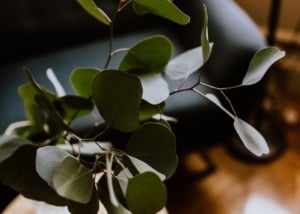
Eucalyptus leaves.

Eucalyptus leaves.
Even people who have very little to do with essential oils will probably be able to correctly identify the scent of eucalyptus (Eucalyptus globulus). There are over 700 different species of this tree – mostly originating in Australia – and its many uses in medicine and industry have made it world-famous. Nowadays, eucalyptus is grown in many different areas and is considered to be one of the first widely-available commercial essential oils. Different species and elements of the tree can be used to create greater or lesser qualities of the oil.
Eucalyptus oil’s effect on the respiratory, digestive, and immune systems is known far and wide. You can use it to treat cuts or wounds and prevent inflammation or infection. The essential oil of eucalyptus helps to combat flu and cold symptoms. You can also find it in various drops, creams, and ointments. It can even be used as an insect repellent and mood enhancer. This oil has purifying and cleansing abilities, but you should handle it with care.
Fennel Essential Oil
Foeniculum vulgare is the botanical name of the fennel plant, also known as sweet fennel, which flourishes around the Mediterranean. The oil which is produced by steam distilling the crushed seeds is (sweet) fennel essential oil. There are other varieties of fennel, but they have other uses and are not made into essential oils. Fennel seeds and oil are also used in the kitchen as a flavoring and additive.
The oil of the fennel plant may help with digestion and proper blood circulation. It can also help with increasing focus and promoting healthy metabolism. It is largely a calming and soothing agent when you apply it topically or inhale it. The Ancient Romans and Greeks used it as a medicine and as food. It was also used to keep insects at bay. You can also use it to enhance mood and raise positive emotions.
Frankincense Essential Oil
Frankincense (Boswellia sacra) has always been associated with Biblical times, though it has been around much longer than that. Originating in various places in India, Africa, and the Arabian peninsula, its name is known all over the world and it is being cultivated in other regions. The essential oil which is produced from the frankincense is a curious one, and it’s no small wonder that researchers are looking into the future of its health benefits.
Frankincense oil comes from the tree’s dried sap, and it’s a tree that takes a long while to mature. The oil is being studied as a medicine of great potential and worth. Although currently, clinical evidence is still scarce. It’s not some panacea oil that can work miracles, but it can be of great help when it comes to the skin, hair, lips, and body in general. Whether you use it as a cosmetics product or medicine, there’s a bright future for this ancient resin.
Gardenia Essential Oil
Gardenia has over 250 species, and the one used for the production of its essential oil is Gardenia jasminoides. Known for their sweet and captivating fragrance, these flowers undergo enfleurage in order to extract the oil. This species of gardenia is native to parts of Asia. However, it is now grown in many other locations around the globe. It has anti-inflammatory, antibacterial, and antioxidant properties, and is also celebrated as a relaxer and an aphrodisiac.
Gardenia essential oil is said to help manage sugar levels in the blood, reduce pains and aches of different sorts, lift one’s mood, and improve memory function. Additionally, it can even promote healthy skin due to its antioxidative powers. You can use this oil in a massage or in your bath or it can also be inhaled directly and enjoyed.
Geranium Essential Oil
The stems and leaves of the geranium plant (Pelargonium graveolens) are used in the production of geranium essential oil. Incidentally, a similar species of geranium produces rose geranium essential oil. Native to South Africa and parts of the Mediterranean, the geranium flower has been brightening gardens and homes for thousands of years. It is an oil that can be added to a bath, inhaled via a diffuser, or applied topically alongside a carrier oil.
Geranium essential oil is known for its astringent and antimicrobial properties. It can help keep the skin cleaner and protect the body. There is also an emotional/mental factor involved since geranium is said to boost mood and increase positive emotion, while also combating anxiety and depression. In aromatherapy, it has been (and is) used for treating pain and inflamed areas, and also promoting emotional stability.
Ginger Essential Oil

Sliced ginger.

Sliced ginger.
Ginger usually needs no introduction, as it’s a well-known food additive and a staple of alternative medicine. The ginger plant (Zingiber officinale) has been harvested for thousands of years, and the Chinese, Greeks, and Indians have used it as a spice and a therapeutic tool. The root of ginger is chock-full of nutrients and vitamins, and these also carry over to the essential oil which is produced from it.
The oil can be manufactured using several methods, which largely contribute to the oil’s quality and potency (or lack of it). The benefits of pure ginger essential oil are significant, as this oil helps with digestion issues, respiratory issues, inflammation, libido, and aches and pains at large. Used in food, in tea, in massages, in a diffuser, this root and its oil are a real tour de force of health and wellness.
Grapefruit Essential Oil

Pile of sliced grapefruit.

Pile of sliced grapefruit.
It may not be as popular or ancient as sweet orange, but grapefruit is nothing to sneeze at. The fruit (Citrus paradisi) itself is actually a combination of orange and pomelo and contains several vitamins and nutrients. Like the orange and lemon, you produce the essential oil from the rind (or peel) of the fruit. Grapefruit has been around for several hundred years. Although it was first seen in Barbados it now grows in many locations.
The essential oil of grapefruit is often used as a way to regulate appetite and mood, lower blood pressure, and keep weight under control. There are antimicrobial benefits associated with grapefruit essential oil, which makes it great for cold and flu symptoms, various skin issues, and acne in particular. It can also have a beneficial effect on those suffering from depression since the citrus scent can lift your spirits and energize the body.
Helichrysum Essential Oil
This is one essential oil that has enjoyed less popularity than some of its fellows. From the hundreds of available species of helichrysum, there is a particular one, Helichrysum italicum (aka H. angustifolium or curry) which has its blossoms steam-distilled and made into an essential oil. The curry plant has its origins in drier areas of the Mediterranean. It’s used as a way to spice dishes but has nothing to do with the Indian curry plant nor with the mixture of spices that carries the same name.
You can use helichrysum oil to smoothen the skin and help the body with the regeneration process. It can be particularly useful for sunburns, acting as an analgesic agent on the one hand and a helping healer on the other. Another known use for this oil is as an antifungal treatment against Candida albicans, an altogether good fungus that can sometimes cause issues when left unchecked, particularly with digestion. Research is being done on using helichrysum oil as a blood thinner, among other things.
Jasmine Essential Oil
The common jasmine flower (Jasminum officinale) is native to the warmer areas of the world, preferring tropical and subtropical regions. Jasmine and its various species are some of the most widely cultivated flowers in the world, mostly due to their captivating scent. The white/yellow-tinted flowers of the common jasmine are often used in the production of different kinds of alcohol and food. You can also find them in the production of various cosmetics, including the aforementioned Chanel No. 5 perfume.
You can use the essential oil of jasmine as an antiseptic agent, a sedative, an aphrodisiac, and as a way to recondition and nourish your scalp and hair follicles. This oil can also affect the skin in a great way and is a viable alternative or addition to different creams and lotions targeting dehydrated skin. The antioxidants and moisturizing nutrients present in jasmine oil can do a lot for dry, cracked, or healing skin. Plus, a hot oil treatment with jasmine can be a real game-changer.
Juniper Essential Oil
The common juniper plant (Juniperus communis) is native to many parts of Asia, America, and Europe. It’s a plant that has been used for thousands of years. The oil of the juniper shrub is extracted from its fruit, wood, and needles by steam distillation. Juniper berries and their essential oil are mostly used in the kitchen. However, there is more to them than just a flavoring agent.
Juniper oil possesses a host of qualities and health benefits. It contains antiseptic, astringent, antispasmodic, and stimulating properties. You can use it to treat wounds and injuries of all kinds. This oil can improve the circulation of blood throughout the body which can help provide much-needed relief from rheumatic pains and types of arthritis. It can also help with cramps of different sorts and is a general tonic for the body.
Lavender Essential Oil

Lavender (Lavandula angustifolia) originally inhabited parts of Africa and the Mediterranean, but nowadays the shrub is pretty much everywhere. The ancient kingdoms of Egypt, Greece, and Rome all used the plant to get extra clean and to calm their spirits. The plant is known for its sedative properties, and for its antifungal and antibacterial qualities as well.
Lavender essential oil is made from the plant’s flowers. It’s a common extract in aromatherapy sessions and is one of the most recognizable scents there are. Some have brought into question lavender’s effects on hormones, but no clear-cut conclusions have been drawn so far. It’s used by countless individuals as a way to lower heart rate, find relief from pain and anxiety, and aid sleep.
Lemon Essential Oil
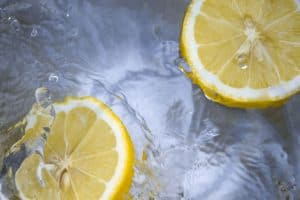
Lemons in water.

Lemons in water.
Lemon (Citrus limon) is a wonderful fruit with a seemingly endless number of health benefits and positive traits. Its origins are not precisely known, but there is speculation involving China, India, and Burma. Nowadays, it is grown all over the planet, and it’s used in a variety of ways. Lemon essential oil is produced from the peel of the lemon fruit, and while the fruit is commonly used as an additive and flavoring to food, there is much more to lemon than meets the eye.
Lemon oil is used to treat stomach conditions, throat infections, fever, nausea, respiratory issues, and even high blood pressure. There is something about the oil’s makeup which makes it a highly-desired essential oil, and indeed it is very popular as a cosmetics ingredient due to its effect on skin and hair. Whether you choose to apply it topically or inhale it, the oil can produce noticeable changes in your mind and body. Lemon is even used to keep bugs and pests at bay.
Lemongrass Essential Oil
The herb known as lemongrass (Cymbopogon citratus) closely resembles lemon in terms of scent, hence the name, but it looks and behaves in ways that aren’t consistent with lemon. There are many species of lemongrass, with their own attributes and uses. To some, the smell is also reminiscent of ginger and mint. The various species of lemongrass hail from locations such as India, China, Indonesia, Malaysia, and other countries.
Lemongrass essential oil is produced by distillation of the fresh or dried leaves. It is said to possess antibacterial, antiviral, and anti-inflammatory properties, and is also high in antioxidants. You can use the oil to help treat stomach issues, joint pains, headaches, and migraines. Inhaling it is a great way to unwind and calm both mind and body. The potent chemicals which are present in the oil mean that the lemongrass’ effect on hair, skin, and scalp may be significant.
Lilac Essential Oil

Lilac flowers.

Lilac flowers.
The first thing that grabs you about the common lilac (Syringa vulgaris) is probably its beautiful color and pleasant scent, but there is more to this flowering plant than looks and aroma. Lilac is native to parts of Europe and Asia, and has been in service of mankind since ancient times. The leaves of this pink-purple plant undergo a process of steam distillation. This yields lilac essential oil that you can use in a variety of cosmetics products and traditional medical disciplines.
Lilac essential oil is a powerful antibacterial, astringent, and antifungal substance. You can use it to treat a range of skin disorders and stomach conditions. It’s main claim to fame, however, is its fever-reducing abilities. However, Lilac oil’s fragrance can also help ease tension and anxiety. When used properly, it can even help reduce inflammation and hypertension. You can add it to a mist spray bottle or sprinkle it into a hot bath. You can also apply it topically alongside a carrier oil.
Manuka Essential Oil
The manuka tree (Leptospermum scoparium) is native to Australia and New Zealand. The leaves and small branches of the tree are steam-distilled in order to create the essential oil. It has a very mild fragrance. The indigenous people of New Zealand and Australia have used this plant to make tea for centuries. It’s known for its positive effects on the urinary tract. For this reason, there are those who call it “tea tree” though it is not related to the Australian tea tree, Melaleuca alternifolia, mentioned earlier.
Manuka essential oil is an antibacterial, antiviral, and anti-inflammatory substance. Its uses include fighting against various skin conditions, with acne being top of the list. Some like to add it to their daily beauty regimen. You can apply it topically or add it to different skin/hair care products. Others choose to inhale its aroma, which has a calming and soothing effect on the mind and body.
Myrrh Essential Oil
A staple of traditional Chinese and Indian disciplines of medicine, Commiphora myrrha is the name of the plant used in the manufacturing of myrrh essential oil. Native to parts of Asia, Africa, and the Middle East, myrrh is a household name (in no small part thanks to its ancient uses in the Bible). The oil is created by collecting the sap (or resin) and distilling it with steam. Very often, myrrh is combined with other herbs, spices, or essential oils in order to enhance its natural abilities.
You can use myrrh oil as an antibacterial and antimicrobial agent, and can also help with infections and inflammation of different kinds. Myrrh is said to combat oxidative stress, but studies are inconclusive. It can be applied topically or inhaled, with some taking it orally (although it is not recommended to use oils that way). The FDA has actually approved myrrh as a flavoring, and it is used in oral care products such as toothpaste and mouthwash.
Orange Essential Oil

Sliced oranges.

Sliced oranges.
The tree known as orange (Citrus sinensis) is one of the most widely-cultivated trees in existence, and its origins are in Ancient China. There are different species of oranges. The sweet orange which we know and love grows in different areas around the world. As with the case of lemons, it is the rind or peel of the orange that you use for extracting the essential oil. Bitter orange essential oil also exists, but they are not the same.
Orange essential oil, particularly its scent, can help boost your mood and lift your spirits while increasing your system’s immunity and resilience. The topical application of this oil can be beneficial for maintaining healthy skin, scalp, and hair, combating high blood pressure, soothing inflamed areas of the body, and providing relief from symptomatic aches and pains. The digestive system can also greatly benefit from this oil, especially in cases of indigestion and stomach pains.
Oregano Essential Oil Vs Marjoram Essential Oil
Marjoram (Origanum majorana) and oregano (Origanum vulgare) are actually separate members of the same family. They are very much alike in appearance and benefits, and are often used interchangeably. The shoots and leaves of the oregano plant are used to make its essential oil, but take caution; there is a difference between oregano oil and oregano essential oil. Although it is a relative newcomer to the essential oil scene, it has been welcomed with open arms.
Oregano essential oil can help you fight flu and cold symptoms, provide pain relief, soothe soreness, and also aid in the treatment of various fungal infections. The oil’s antiviral, antibacterial, and anti-inflammatory properties make it a really great addition to anyone’s pantry or meds cabinet. You can inhale it or use it topically (after dilution), and can also help with digestive issues. Some add oregano essential oil to food and drink, since it’s high in antioxidants and can help from the inside out.
Palo Santo Essential Oil
The palo santo tree (Bursera graveolens) is a cousin of frankincense and myrrh. It is native to dry forests of Mexico, Colombia, Peru, El Salvador, and neighboring regions. Incas traditionally used the palo santo tree in their folk remedies, and it is still being used to this day. The essential oil of palo santo is produced through steam distillation, and it is known as a very spiritual oil. In Spanish, palo santo literally means “holy stick”.
Traditionally, palo santo essential oil was used in sacred rituals and meditation practices. It can be used for symptoms of the common cold or flu, finding relief from stress, depression, and anxiety, and caring for physical and mental pains. It is also said to provide the immune and nervous systems with a boost. Whether you consider it holy or not, it’s a highly potent oil with great healing potential.
Patchouli Essential Oil
The patchouli genus has its origins in the mint family, and the species used to create the essential oil is Pogostemon cablin. Patchouli is native to certain parts of Asia, but you can now cultivate it in many locations, such as China, Taiwan, Philippines, Vietnam, and even South America. The mature branches are used (with their leaves and stems separated) to create the oil, mostly through steam distillation.
This oil is used for a variety of purposes: as an antidepressant, antiseptic, astringent, a sedative, and also as a general tonic for the body. Patchouli is known for its use in different perfumes and incense. You can also use patchouli leaves to prepare herbal tea. The oil also has benefits for the scalp, skin, and hair: due to its astringent and sedative properties, it can play a role in providing relief from pain and inflammation, plus it can provide an extra layer of protection against different infections.
Peppermint Essential Oil
Peppermint (Mentha piperita) was found in parts of Europe and the Middle East but has spread all over the globe. It’s the most commonly used variety of mint, and while some only know it as a garnish or flavor of gum, it also has its own essential oil. The Greeks especially honored the fragrant plant, making it part of their ancient mythology.
The essential oil of peppermint is derived from the plant’s leaves (fresh or dried). It is said to be highly beneficial for body and mind, with a host of positive attributes to its name and even some measure of clinical success. It can help with digestive issues, mood and memory, cognizance, cold symptoms, allergies, and more. Peppermint also plays a large role in the cosmetics industry, due to its vitalizing effects on hair, skin, and scalp.
Pine Essential Oil

Pine tree.

Pine tree.
Three main varieties of pine (Pinus) needles are used in the steam-distillation process which yields pine essential oil – Dwarf Pine, Longleaf Pine, and the Scotch (or Norway) Pine. The scent and extract of pine are used in abundance even nowadays, though its history goes back many centuries. Don’t forget that Christmas trees are often pine trees! Inhaling its scent is said to be great for the respiratory system.
In aromatherapy, pine essential oil (not to be confused with pine nut essential oil) is used to cleanse the mind of stress, to uplift the mood, and to provide the body with a boost of energy and positive emotions. You can apply this oil to your hair to help keep locks clean and smooth while combating and preventing dandruff. When you apply it to the skin or massaged in, it can help reduce inflammation, fight against fungal infections, heal cuts and wounds, and also stimulate blood circulation.
Rose Essential Oil

Roses can be made into an essential oil.

Roses can be made into an essential oil.
There are over 250 different kinds of roses. Among those, Rosa damascena and Rosa centifolia are the two which are most commonly used in the production of rose essential oil. They are native to parts of Northern Africa, India, Europe, and the Middle East, but are being cultivated worldwide. You can extract the oil from the petals through the careful process of steam distillation,
Rose essential oil boasts a host of ingredients, including vitamins A, B, C, E, and K. It is high in potassium and antioxidants and is a strong antibacterial agent. This oil can also behave as a skin-surface anti-inflammatory agent. Therefore, it may help with reducing redness and swelling around sores, cuts, pimples, and wounds. Those vitamins and other substances also assist with hair maintenance. They can help the hair to grow stronger and thicker over time.
Rosemary Essential Oil

Rosemary growing in field.

Rosemary growing in field.
Another plant which is widely known as a food additive, but in fact possesses so many more talents, is rosemary (Salvia rosmarinus), formerly known as Rosmarinus officinalis. Also known as the “herb of remembrance”, it’s native to the Mediterranean and is part of the wholly-respectable mint family. It’s now grown all over the world and you can use it for a lot more than just enlivening your recipes.
You produce rosemary’s essential oil through the distillation of the flowers, though you can also produce it using the stems and leaves. People use this oil to stimulate hair growth, increase blood circulation, contend with anxiety and stress, and also to combat inflammation. It has been said to also positively affect the brain, provide relief from pain, and help with skin issues like acne. In the worlds of aromatherapy and cookery, rosemary and its oil are always in good standing.
Sandalwood Essential Oil
There are several species of sandalwood, and the one used in the production of sandalwood essential oil is most often Santalum album, or Indian sandalwood. Native to parts of Asia and India, it’s a tree that has been revered for ages. Its use in Traditional Chinese and Indian Medicine is not to be underestimated. The essential oil of sandalwood is produced by using the heartwood (center) of the tree, which is considered exceedingly helpful and of significant value.
Sandalwood essential oil is used to treat a wide range of conditions, physical and mental. While scientific evidence is not in abundance by any means, there are researchers that have demonstrated the usefulness of the oil’s properties. The way sandalwood oil engages with inflammation and infection, such as with common cold symptoms or urinary tract infections, is encouraging further research into the tree’s health benefits.
Spearmint Essential Oil

Spearmint growing.

Spearmint growing.
This is perhaps the “classic mint” plant, also known as Mentha spicata. Spearmint is native to Europe and parts of Asia, but grown all around the world. Many industries use it is as a flavoring and it contains much less menthol compared to its fellow essential oil of peppermint. Because it is a milder option, you can often use it in mint products for children or those with sensitivities.
Spearmint oil is used for much of the same purposes as peppermint. Uses include regaining or retaining proper digestion, increasing awareness and focus, treating skin irritations and/or bites, and keeping the skin and hair looking and feeling good. You can use spearmint oil in the kitchen, and many people add it to spice up meals and aid digestion.
Tea Tree Essential Oil

Tea tree essential oil.

Tea tree essential oil.
Not to be confused with the tea plant (Camellia sinensis), tea tree (Melaleuca alternifolia) is the source for one of the best-known and most widely-used essential oils in the world. Tea tree oil is an ingredient found in many hair care and skin care products, and it has also been used for centuries as a traditional medicine by the indigenous people of Australia. You use the leaves of the tea tree to produce this oil. It has been commercially used for about 100 years now.
The essential oil of the tea tree is said to aid in the treatment of minor cuts and wounds, acne, dandruff, bacterial and fungal infections, and more. Australian soldiers used to carry it as part of their medical gear in World War I. The benefits for the skin, scalp, and hair are not universal. Some actually find that the oil dries them up to a point of being detrimental. It is a highly potent oil, even as far as essential oils go, and you should use it with care.
Turmeric Essential Oil
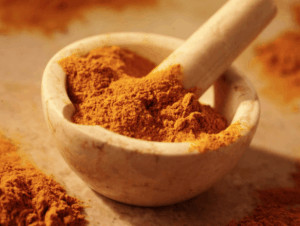
Ground turmeric.

Ground turmeric.
Native to parts of Asia, particularly India, the turmeric plant (Curcuma longa) has been in use as a medicine and food additive for thousands of years. Its primary active ingredient is curcumin, and its bright yellow color is a dead giveaway. Because of its wide range of benefits, turmeric is used as an herbal medicine or supplement. You can also use it as a flavoring and food coloring, and as a cosmetics ingredient. You can produce the oil from the leaves in a number of ways, including steam distillation and fluid extraction.
Turmeric essential oil is known for its anti-inflammatory, antioxidant, and analgesic properties. It is used to calm the stomach and allow proper digestion, to increase immunity, and to reduce allergen sensitivity. Turmeric also helps to keep the skin clean and healthy. It combats the arrival of spots, blemishes, and wrinkles. Along with ginger, it is one of the best things to keep your body safe before and during the winter months.
Vanilla Essential Oil
The flat-leaved vanilla plant (Vanilla planifolia) is responsible for genuine vanilla flavoring in just about anything. But taste is not this originally-Mexican shrub’s only claim to fame. The beans from the plant are used to produce vanilla oil. You can use the oil as an antioxidant, an aphrodisiac, a sedative, and a relaxer, and even as an aid in menstruation regulation and for easing period pains.
The oil of vanilla is not usually placed in the same category as other essential oils, because the primary component is not an oil at all. The plant’s beans hold the sap which is then combined with other substances to produce what is commonly known as vanilla essential oil.
Vetiver Essential Oil
This oil is somewhat unique, since it is produced by the root of the vetiver plant (Chrysopogon zizanioides) and not the stems, leaves, or flowers. The plant is native to certain parts of India, and these days it is being grown all over the world and more so in the tropical areas. Known as the “oil of tranquility”, it is said to have antiseptic properties, and to be grounding and balancing. If you are feeling restless and stressed out, this oil could be of great use. Although it is one of the lesser-known oils, by and large, it does not take away from its efficacy.
Vetiver essential oil has shown promise with skin care and hair care, and is being looked into as a more natural alternative to drugs prescribed for ADHD and/or ADD. You can use this oil in several ways: apply it directly to the skin (after being diluted), vaporize in a diffuser, or inhale it straight from the vial. It promotes a calm mind and a sound body and is also used as a mild sedative and bedtime aid. A few drops in your bath can go a long way, and it’s one of the best uses for this oil.
Ylang Ylang Essential Oil
A native to India and Australia, the Cananga tree (Cananga odorata) is where we get ylang ylang essential oil. Nowadays, this tree is grown in different areas of the world, but its original climate and habitat are considered best for proper development. The oil which is extracted from the flowers is very rich, and it was famously added to Coco Chanel’s No. 5. France remains one of the biggest importers of ylang ylang in the world.
As a medicinal and therapeutic resource, ylang ylang essential oil can help by easing symptoms of depression and anxiety, lowering blood pressure, relaxing one’s mood, and even aid with treating infections. As a hair and skin product, this oil is instrumental in balancing sebum production and in calming irritated skin. The vitamins it contains can be useful in strengthening the hair, skin, and scalp.
Conclusion
Essential oils are not magic substances, but they are powerful and potent. They won’t solve every problem, combat every physical or mental condition, and eradicate diseases. But you can use them to aid the treatment of illnesses and ailments naturally. They are also useful for prevention and for keeping one in the line of good health. Preventive medicine is not to be underestimated, not now or ever, since, in essence, it helps solve a problem before it even becomes a problem.
After all is said and done, we’re talking about plants and nothing else. Concurrently, there are those who choose to ignore Mother Nature’s remedies. But even the most eager proponent of Western medicine and the modern-day medical sciences will have to concede this fact: plant medicine was here long before anyone dreamed up antibiotics and inoculations. Now, just because something was here earlier doesn’t necessarily make it better, but there is a lot that science is still discovering the traditional practices of China, India, and the Ancient World.
This essential oil guide, as I said at the start, is not a definitive guide by any means, nor does it presume to encompass everything related to these oils into its pages. It’s always best to consult with a physician and/or alternative health care professional before beginning treatment with essential oils. Like ordinary Western medicine, there are indications and contraindications. You need to be smart in whatever way you choose to use Nature’s gifts.

